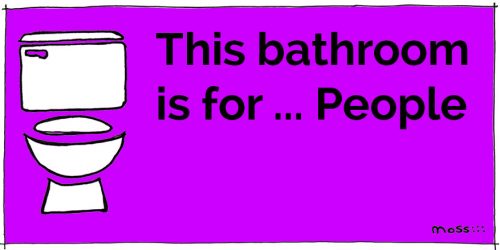Creating an inclusive training environment

Some of the best training courses are those where you learn just as much as the participants!
Recently, I was training a Group Facilitation Methods course for ICA:UK and a participant let us know (via the comments and requests section of the application form) that their gender identity was non-binary.
In discussions with the participant themselves, with a friend who runs the consultancy Escape the Binary and through further reading, we identified some very practical and simple steps to take to ensure that we were being as inclusive as possible.
Because changing habits of speaking and thinking can feel a little clumsy and uncomfortable, I thought I would share our actions here. Note that many of these are simply good practice for inclusion of all group members and are not necessarily specific to gender inclusivity.
1) It was brilliant that that we were aware of this participant’s request for consideration before the course started. Good practice is to always have a place on a course application form to invite any further information which will help us to offer the best possible course for that participant.
2) Our participant said “Asking people to share the pronoun they use when they introduce themselves at the start is good. I always like to explore what pronouns are when I do this by asking people to define what a pronoun is, asking them why we ask people what pronoun they use, asking whether it’s important to ask, and asking if it can ever be offensive to ask someone’s pronouns. I think getting people in the habit of doing pronouns as well as names as a facilitation skill is important, and placing emphasis on always doing this rather than just when you think you have a non-binary or trans person. Feeling able to challenge people if they use the wrong pronoun for someone is also useful”
We used our usual method of inviting people to introduce themselves but with the addition of a question about preferred pronoun. Our ‘introductions’ flip chart invited people to tell us:
a. Your preferred name
b. What you do outside of this course
c. Your preferred pronoun (They/he/she/other)
d. Something which made you smile recently
Both of the trainers modelled this by going first.
When we debriefed this exercise (since we were teaching facilitation skills), we also drew attention to the phrasing ‘what do you do outside the course?’ rather than ‘what is your job?’ to model inclusivity/avoid building assumptions into questions.
3) Avoid saying things like ‘ladies and gentlemen’ when calling the group to order. (Interestingly, when I’m working online, I have developed an annoying habit of saying ‘you guys’, and I’m trying to retrain myself to say ‘folks’, in the spirit of replacing one Americanism with another!)
4) Avoid making assumptions about the interests and capabilities of group members (e.g. don’t ask for ‘a few strong lads to help move tables’!)
5) Don’t divide people into groups/pairs on the basis of gender.
6) Avoid making assumptions about people’s domestic arrangements, relationships or lifestyles.
6) Ensure there is access to a gender neutral toilet. If this is not available in the building, and you are in the UK, then this is actually a breach of the UK Equality Act 2010, so if building staff have any reservations, their attention can be drawn to this. There is also a very useful document called ‘Providing services for transgender customers’ prepared by the UK Government Equalities Office (see resources below). However, as a temporary fix, some printed or even hand-written signs and fixing them over the existing signs may serve to turn any toilet into a gender neutral one. Do not assume that the disabled toilet will do. We prepared the following signs:
‘This is a gender neutral toilet with…..” and then specified whether it was ‘a single cubicle’, ‘individual cubicles only’ or ‘cubicles and urinals’ . We also covered the binary gender icons.
All our participants engaged with the discussions with alacrity, showed considerate language and behaviour, and the venue manager agreed to review their arrangements for the future. Our participant was also very happy with the provisions made.
Resources:
Quick guide to sexual identity and gender orientation and lots of other great resources and links from http://itspronouncedmetrosexual.com/
Providing services for transgender customers. UK Government Equalities Office
First steps to Trans Inclusion Stonewall
Including LGBT Young People in Sport (Proud Trust)
I hope to write another post about inclusivity in Monitoring & Evaluation, but in the meantime, here are some resources which offers some thoughts regarding collecting demographic information
Collecting transgender inclusive gender data in workplace and other surveys
Capturing data on sexual identity and gender

